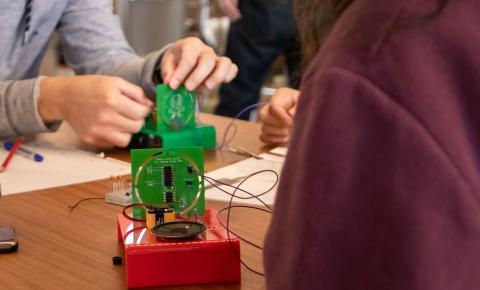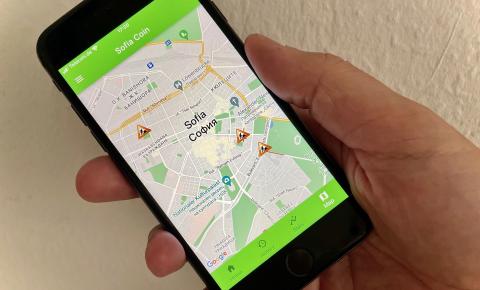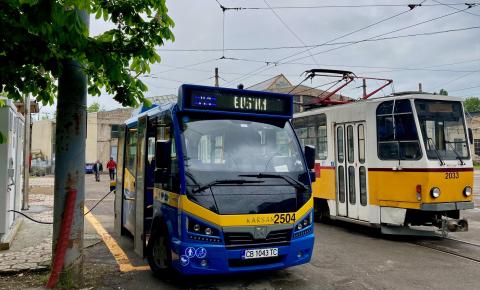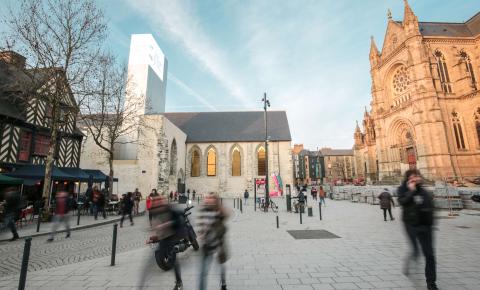
Driving the digital journey: Cohesion policy and EUI’s role in the urban tech revolution
Digital technology for cities is developing at an unprecedented rate, reshaping how cities function and how citizens interact with their environments. But how do we keep up? Even more, how can we be the drivers of this change, rather than passengers on the journey?
Over the last decade, digital transition has been a massive shift for cities, and the next ten years may see the journey become yet more challenging. EU Cohesion policy is supporting this journey, with programmes like the European Urban Initiative – acting as a powerful engine, fuelling cities with the funding and strategic support needed to accelerate their digital transition.
A strategic driver
Digital transition is now a key pillar of EU strategy and is essential to the future prosperity of Europe and its citizens. City or neighbourhood level is where many of the real impacts of digital transition are seen by people, and EU Cohesion policy has played a significant role in driving and enabling these local transitions, with over EUR 40bn of investments in digital transition planned by Cohesion policy over the 2021-2027 period.
Funded by ERDF, ESF+, the Cohesion Fund, Interreg and the Just Transition Fund,
it is giving cities financial and strategic support to bridge the digital divide, boost innovation, and create smarter, more inclusive urban environments.
Laying the foundations
This focus on digital isn’t new, however. Initiatives like the Digital Transition Partnership of the Urban Agenda for the EU has been laying the groundwork for years, focusing on key pillars such as upskilling city administrations and citizens; ensuring fair access to and use of data, encouraging citizen-centric e-government, and business model thinking in cities to achieve sustainable digitalisation.
Building on initiatives like Europe’s Digital Decade, the EU Mission on Climate-Neutral and Smart Cities, and the European AI Strategy, cities have the tools and resources to accelerate their transformation.
From global to local
Whilst the EU-wide strategies provide the framework, it’s at the local level where real change happens. Programmes like the European Urban Initiative, Urban Innovative Actions, and URBACT have been key pillars of support, helping cities to use this context to define and implement their own digital roadmaps.
The EU acknowledges the innovation capacities of cities and allows them to drive bottom-up change through the cohesion funding and many projects and initiatives show how cities use the levers the available funding provides.
Previous innovative projects funded under UIA like RUDI, INNOAIR, Aveiro STEAM City, and LINC for example, give a glimpse into what’s possible when deploying digital technology and developing the ecosystem that surrounds it.
RUDI for example, led a collaborative partnership-based strategy on data, making 390 data sets more accessible to local citizens and businesses through a new portal, with an approach to the use of data that has been recognised as being ethical by an independent label ; Aveiro STEAM City on the other hand develops the concept of STEAM in the city – adding the ‘A’ for Arts into the traditional Science Technology Engineering Maths (STEM) grouping, to infuse more creativity into tech and digital initiatives for a more holistic ecosystem. This has been done through STEAM education programmes, artistic residences, 5G technology in the city centre, and a new Tech City HUB to support the wider ecosystem around tech and learning in the city.
URBACT city networks such as DigiPlace, IoTXchange and Digi-Inclusion have all directly supported networks of small and medium sized cities to explore their local strategy and response to particular aspects of digital transition. Through its TechPlace capitalisation initiative, URBACT also created a bespoke MOOC for cities (Massive Open Online Course) on the subject of digital transition, which helps to communicate simply the main concepts and challenges associated with digital transitions in a few key policy areas, to make people feel more comfortable in considering digital tools and new technologies as a way of delivering against policy goals.
Building on all of this, the third EUI-Innovative Actions (EUI-IA) Call for Proposals was launched in May 2024 and included “Technology in cities” as one of its topics, with approved projects being announced this month. This topic aims at supporting the testing of innovative solutions powered by new technologies in real life settings for better services to citizens and/or for boosting local authorities’ capacities to offer these services, via experimentations that could be replicated at a wider scale with the help of the Cohesion policy investments.
Such projects are not without difficulties of course, and many projects have given cities first hand experiences of the types of barriers and challenges encountered with the implementation of digital initiatives. These projects allow cities to experiment and help cities to set out potential paths for other cities. By creating a safe space for experimentation and innovation, urban challenges can be approached with digital solutions.
Integrating digital thinking – a cross-cutting theme
A key factor here is digital transition doesn’t happen in isolation. An integrated approach to sustainable urban development is critical for the success of digital projects. Whilst the technological aspect of projects can sometimes be challenging, cities must also keep focus on the human side of digitalisation and ensure that policy makers, city practitioners, and citizens are all part of the development process.
This includes integrating digital projects with a range of policy domains and city departments, connecting with EU level and regional frameworks for collaboration and digital governance, and taking a wider territorial view about technical projects.
Cohesion Policy plays a critical role here, with supporting frameworks and capacity building from the likes of UIA, EUI and Territorial Cooperation Programmes there to help cities break down silos and embed digitalisation into broader sustainability and resilience strategies.
Territorial Cooperation Programmes have “digital” as a cross-cutting theme, pushing cities to consider it as part of their planning and implementation activities. It highlights that digital is not just about the tech but about how the tech can contribute and provide a solution for urban challenges. It further strengthens the links made between digital topics and other thematic areas.
Things like common standards and interoperability of digital systems are also important here. Ensuring common language allows for sustainable and more affordable projects. For example, if cities are collaborating with neighbouring cities or regional authorities, having isolated digital tools will make collaboration more difficult; having different data schemas or mismatched data collection and privacy policies will limit options for solutions.
Looking back to look forward
Programmes such as EUI and its processor UIA serve to help cities navigate these challenges (and sometimes failures!) in an environment where the learning points from these experiences can be reviewed, understood and capitalised more effectively. In turn, this is shared more openly, within the city and with others. Others who are looking at running similar initiatives can learn and build on the previous experience of others, helping avoid mistakes or traps already overcome by other cities.
Cohesion policy has made a clear difference here. As with other topics, without programmes and projects with a strong capitalisation and knowledge exchange component within and between cities, digital projects would be happening much more in isolation, and would repeat mistakes of others, rather than learning from them.
A deeply technical future
Whilst learning from previous experience, we must also have an eye on the future. Looking forward, the challenges of the next wave of digital transition are already here – in particular, getting to grips with “deep tech” and its impact on the digital landscape for cities.
When we talk about deep tech in cities this includes things like Artificial Intelligence (AI), digital twins, 5G, IoT, blockchain technology, big data and -more importantly- combinations of these. Many cities have yet to really get to grips with the full implications of these technologies. They will need to explore and exploit the potential opportunities of deep tech to improve city services, but also manage the risks and pitfalls it can bring.
Being part of the wave is crucial for the EU’s competitiveness and resilience. Cities looking to adapt deep tech to urban challenges pushes both the public and private actors to think outside the box. It pushes them to go further and stay a frontrunner in global economic development whilst creating the best possible urban environments for citizens.
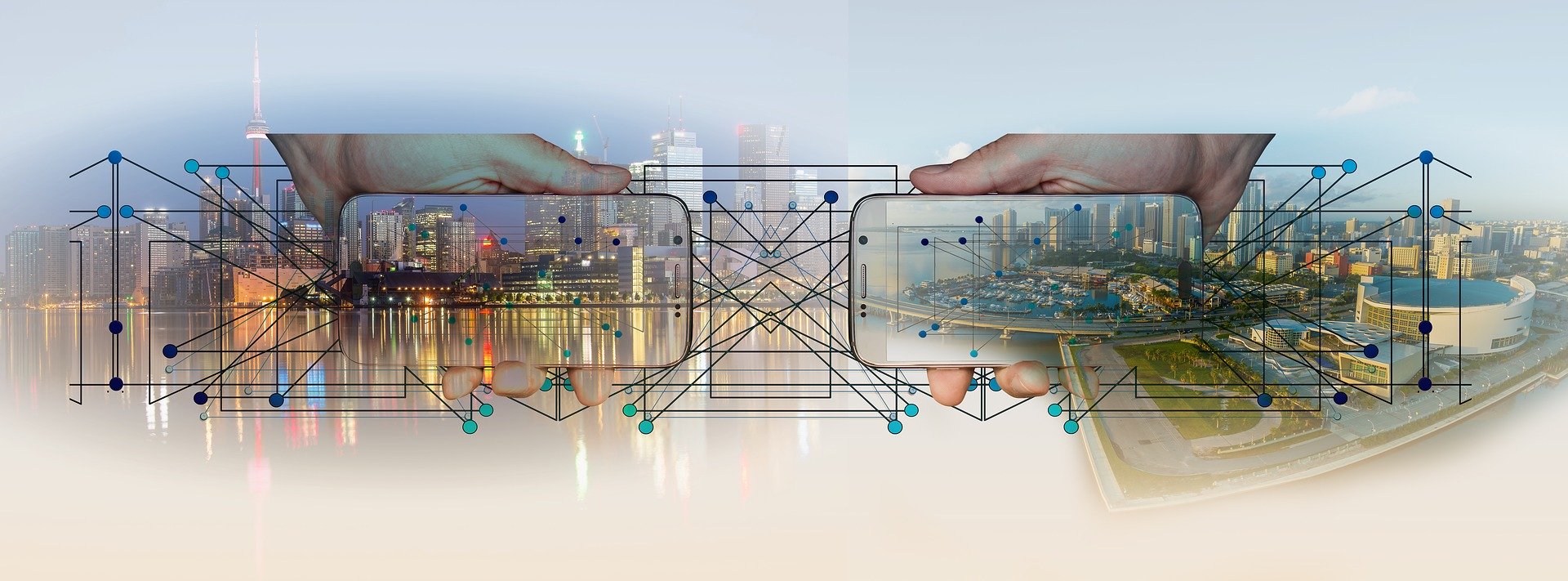
Aveiro STEAM City
From ambition to reality
Many cities and projects do already have examples and projects in progress. Indications are that cities are increasingly embracing newer technologies like AI or are planning to do so.
But what does this look like? Initiatives can range from AI chatbots to machine learning traffic planning systems to local currencies based on blockchain. But not all have to be super complex. A concrete European example is the Blue4Green EUI project, which will develop smart, sustainable urban water management in Bruges (BE).
The project is planning a digital twin and an automated water steering system, with IoT sensors linked to its smart water balance model, in order to manage the flow and quality of water in the city’s many waterways and drainage systems. This includes an AI layer, using machine learning algorithms to automatically predict and adjust the blue network, removing the need for constant human monitoring and manual interventions.
Building a future beyond tech
Blue4Green is an example of a city building a practice on top of a previously tested and proven practice from another city: part of Bruges platform is already in use for similar practices in other Belgian cities, including Leuven and Roeselare. This reduces development costs and risks, but also provides greater financial sustainability for all the cities involved, by using a shared regional platform for their systems.
In this way, decisions about digital systems are as much about policy as they are about technical options. Digital literacy among policymakers is now just as crucial as advanced coding skills among developers. The challenge isn’t just what technology to use, but deciding when, where, and how to invest in it. How it should be used and governed will offer just as many policy challenges for cities as the systems present technical ones.
The road ahead
As cities continue to walk the path of digital transition, EU Cohesion policy remains a critical ally in fostering innovation, resilience, and inclusivity. By offering financial support and strategic guidance, it empowers cities to develop a coherent roadmap for their digital journey and harness the opportunities of emerging technologies. It creates the bridge between cities and the available technology and provides the essential space for testing and developing.
While challenges remain, particularly as new technologies like AI and other deep tech continue to evolve, the lessons learned from past experience and ongoing projects funded under Cohesion policy and EUI will serve as invaluable stepping stones for future progress. Ultimately, the digital journey is not just about technology – it’s about building smarter, more sustainable cities where people and technology work together for a better future.


